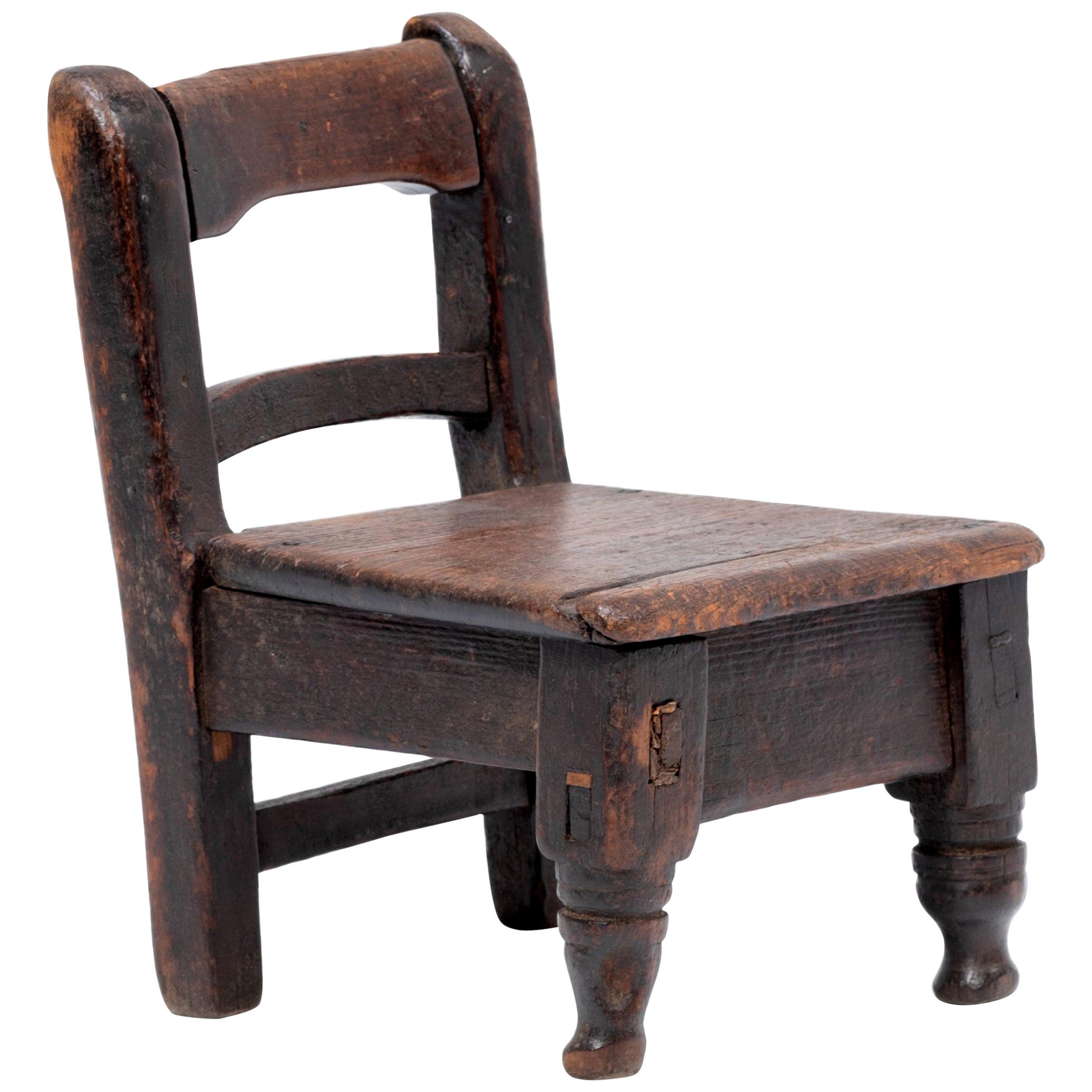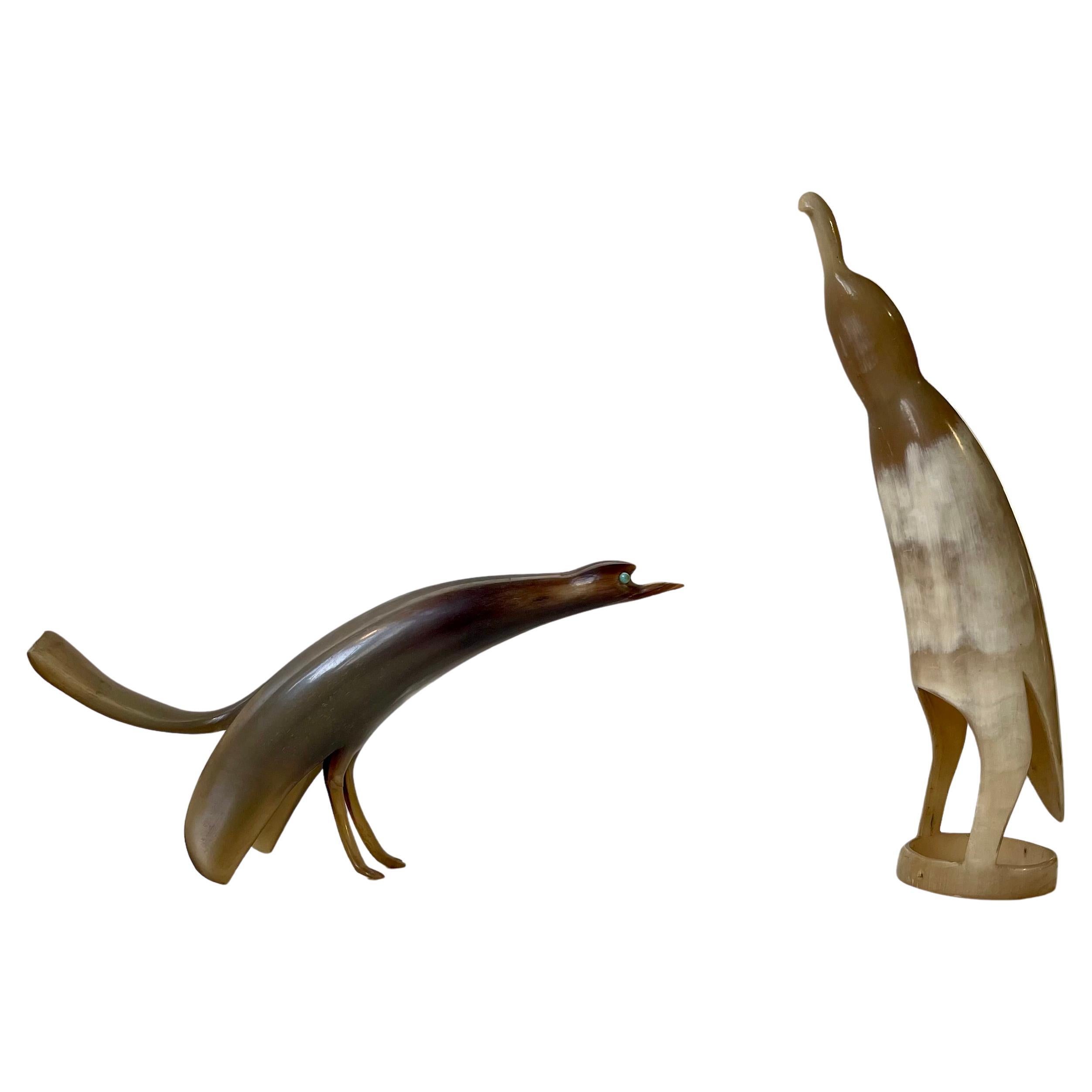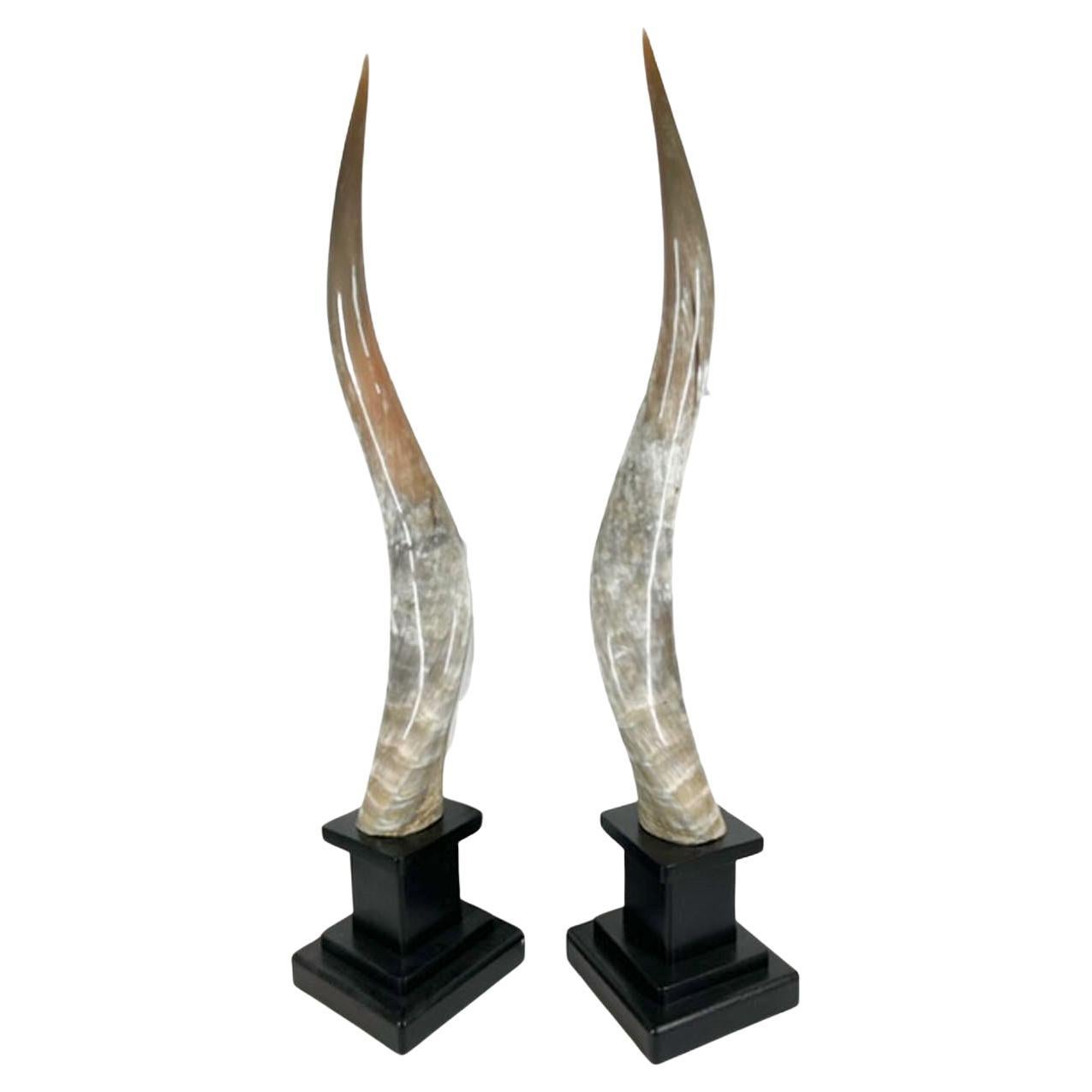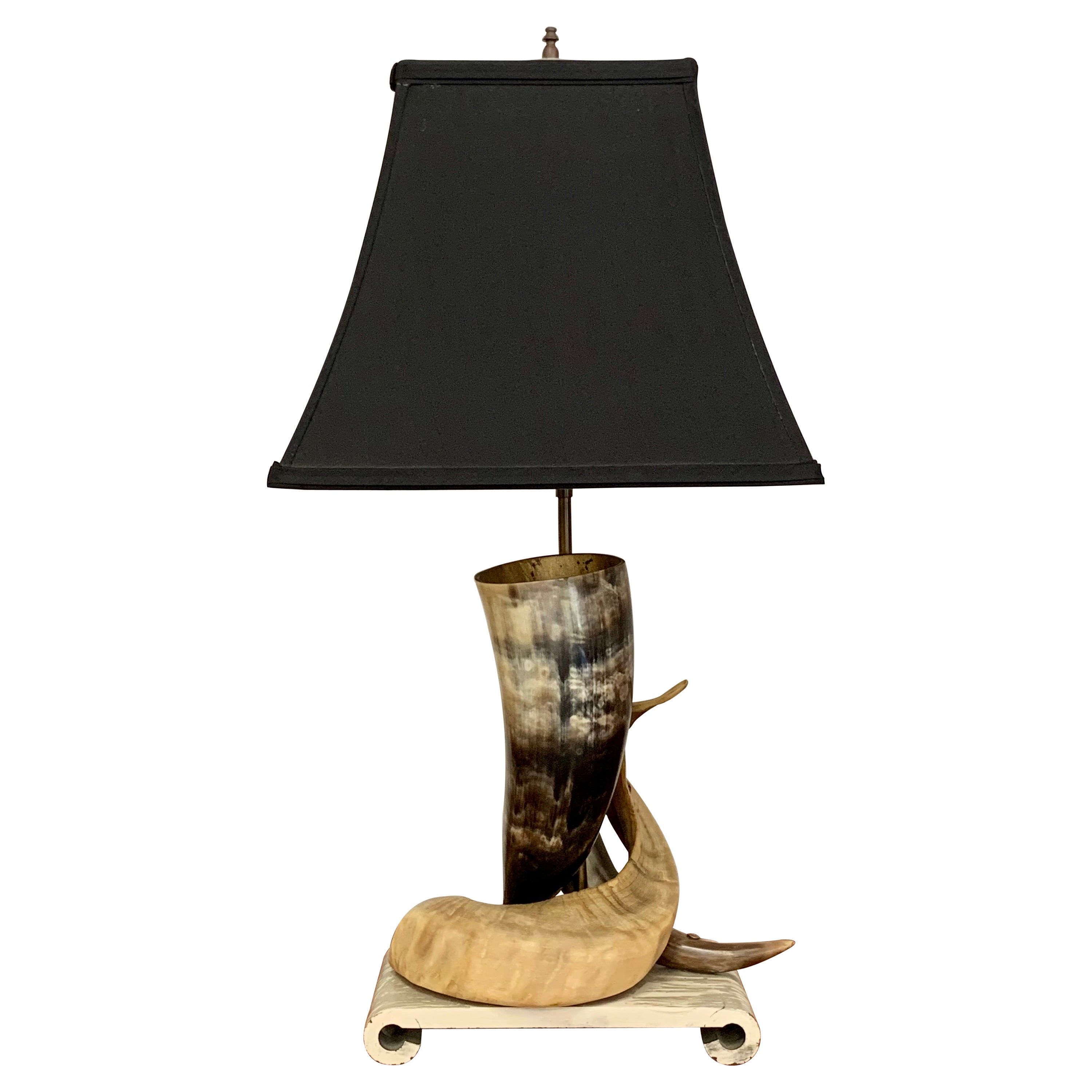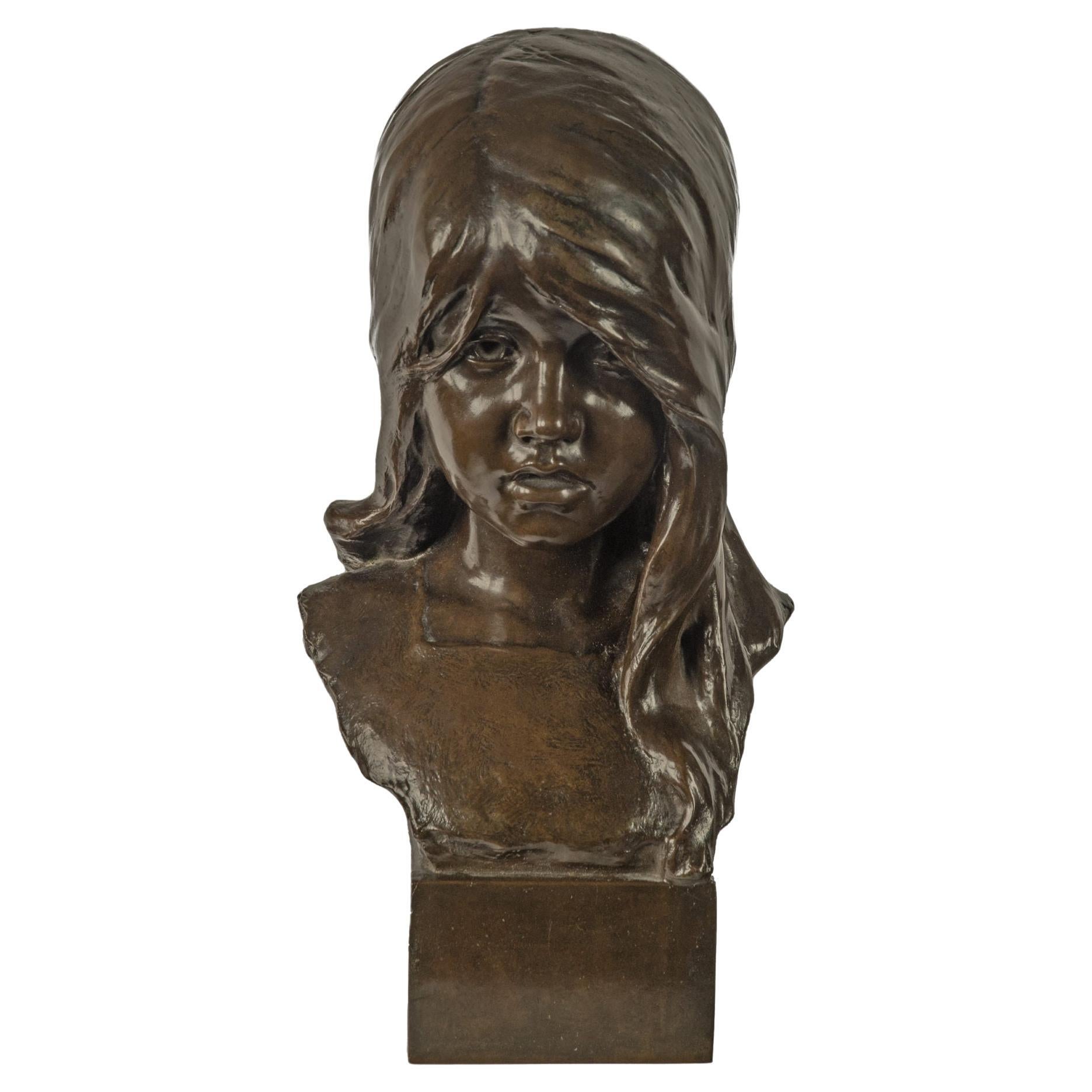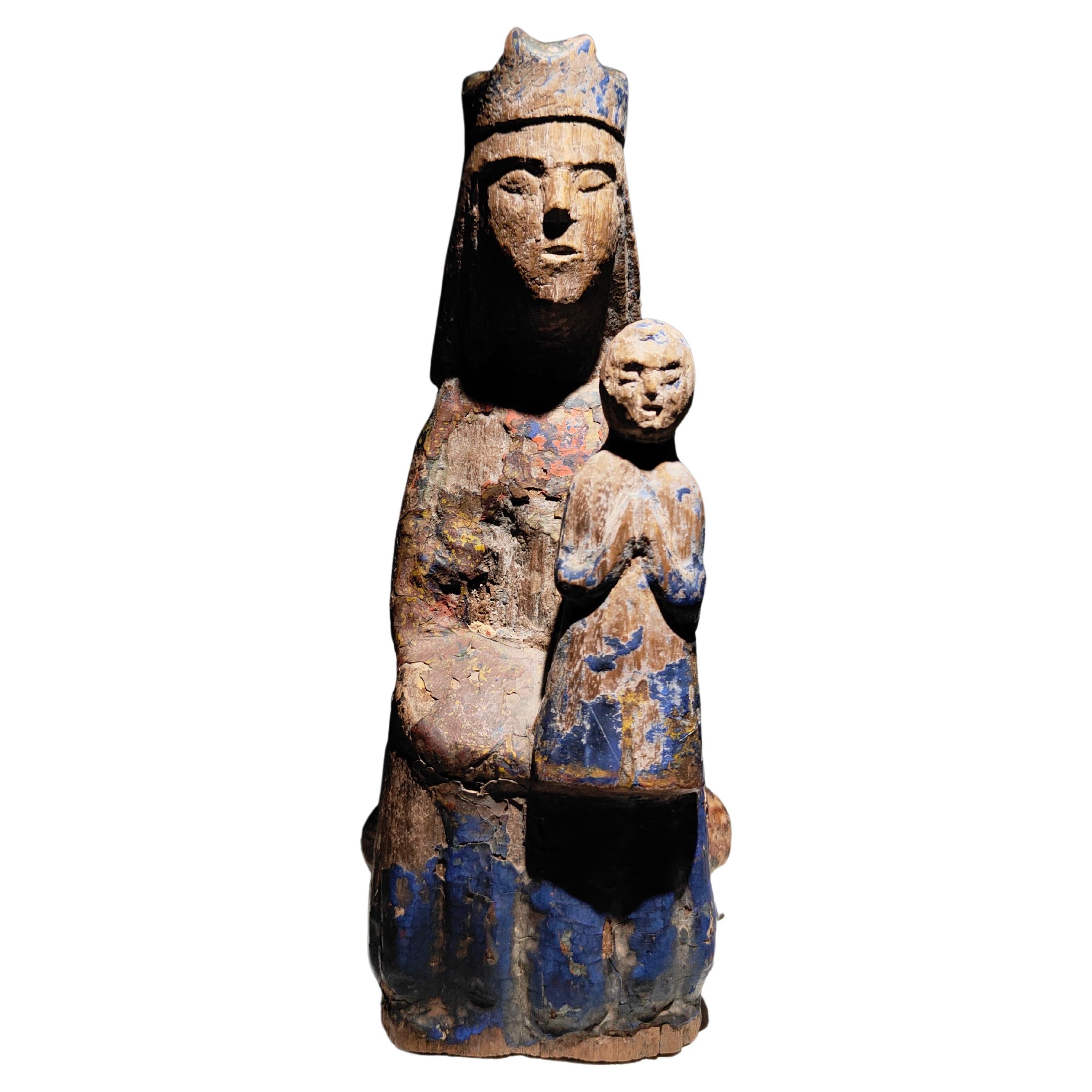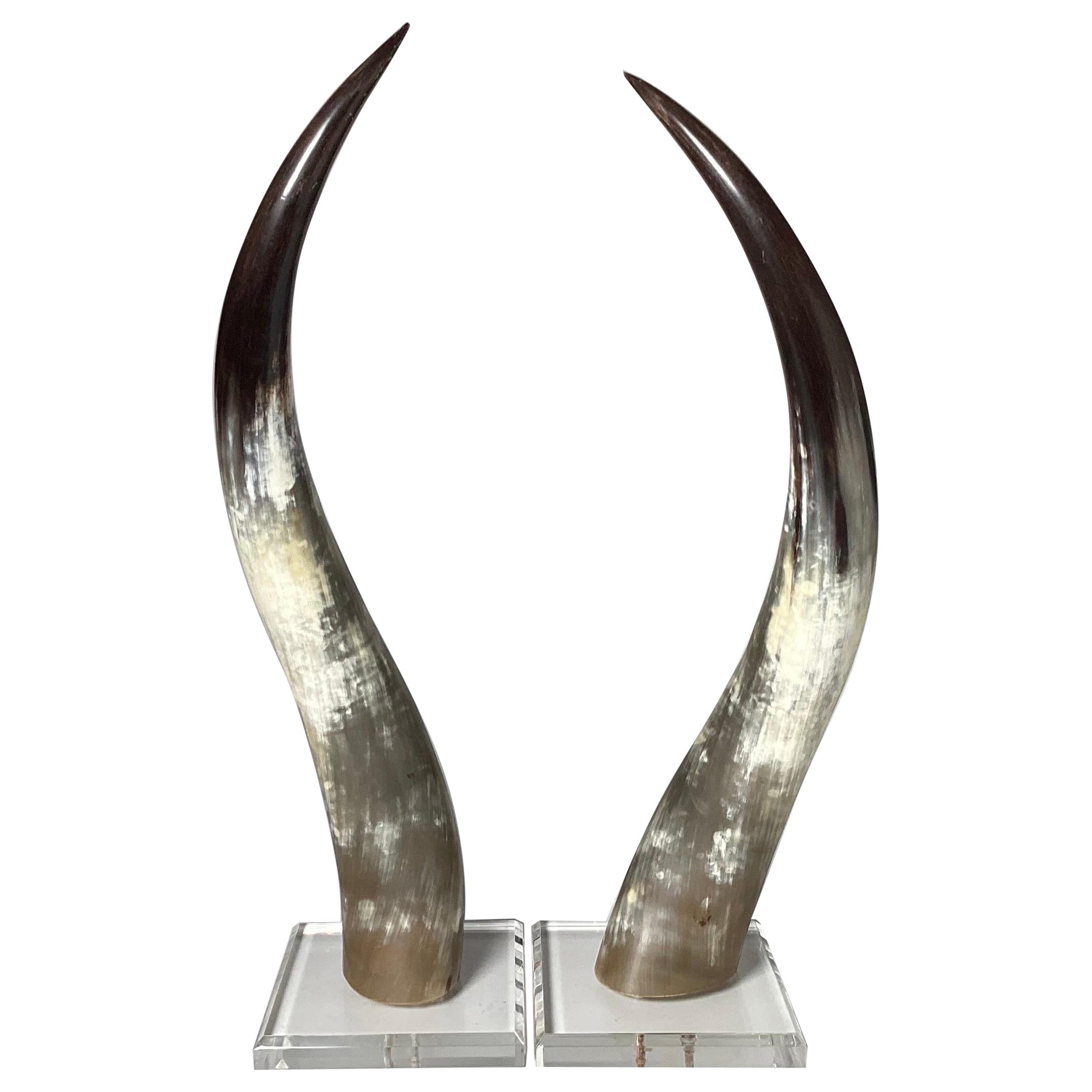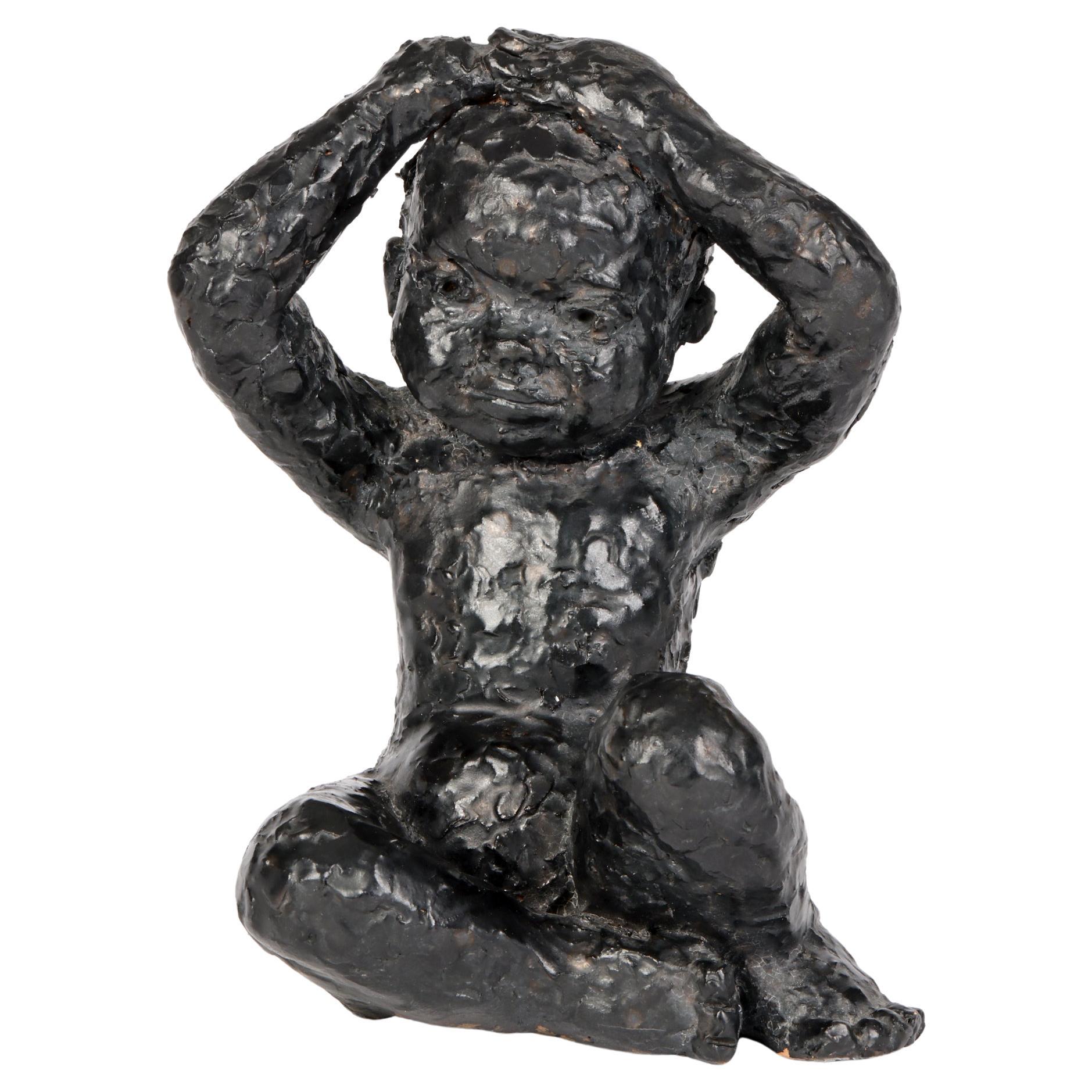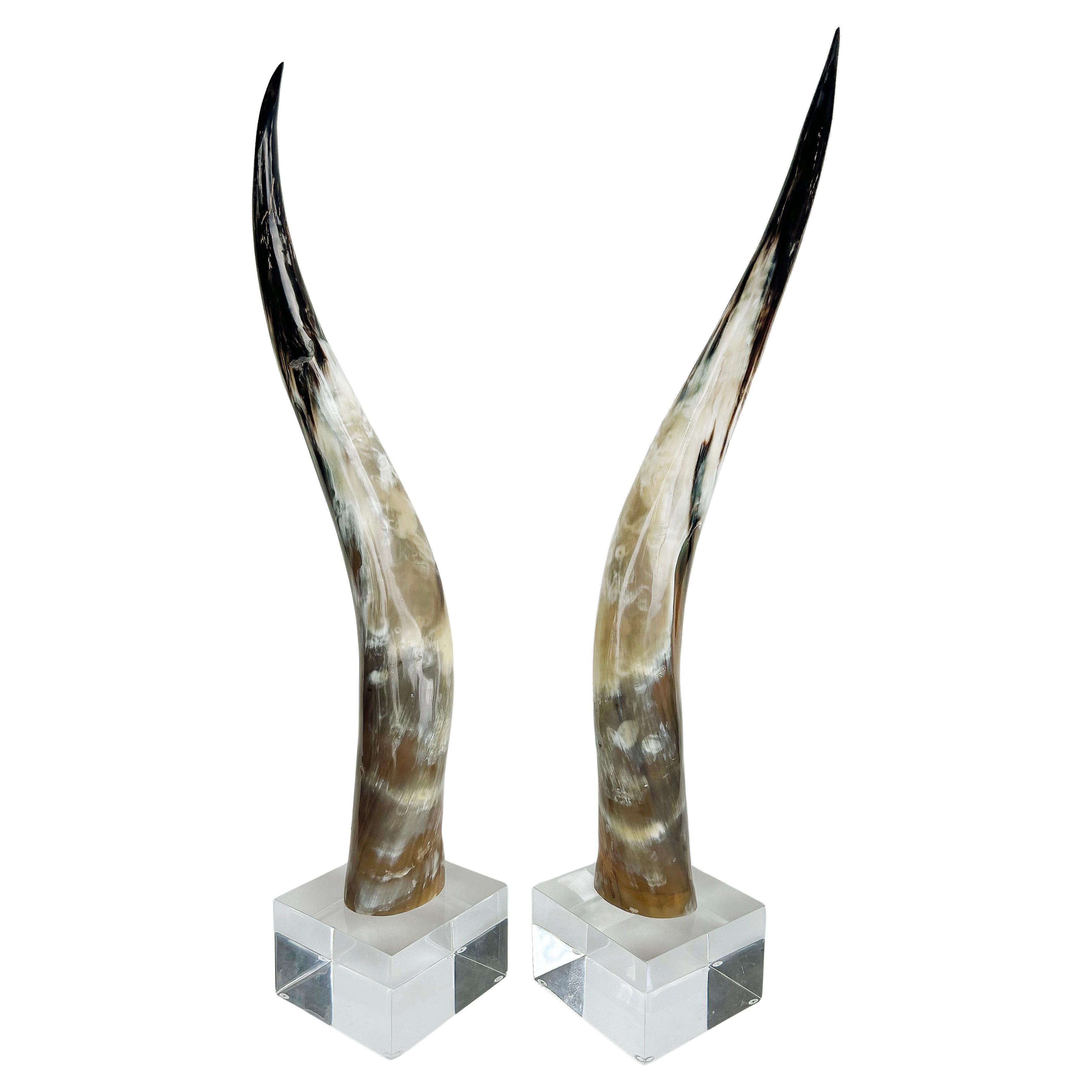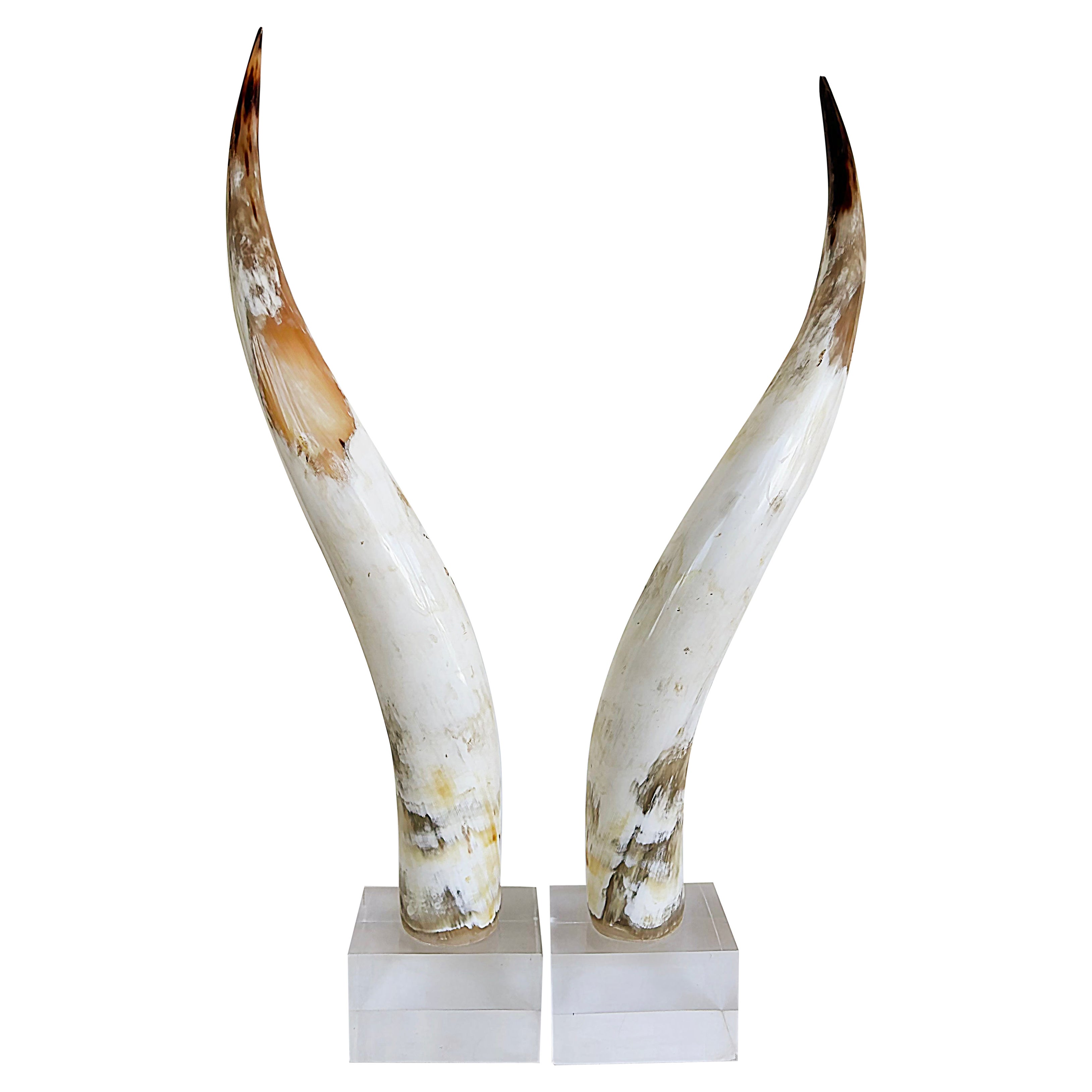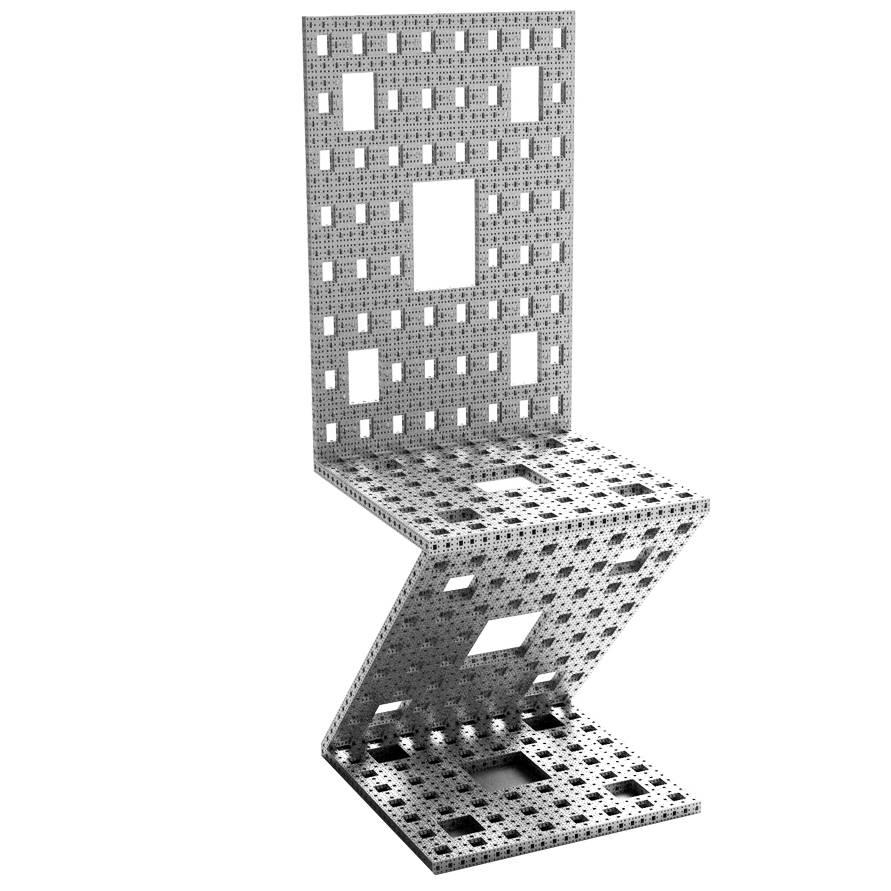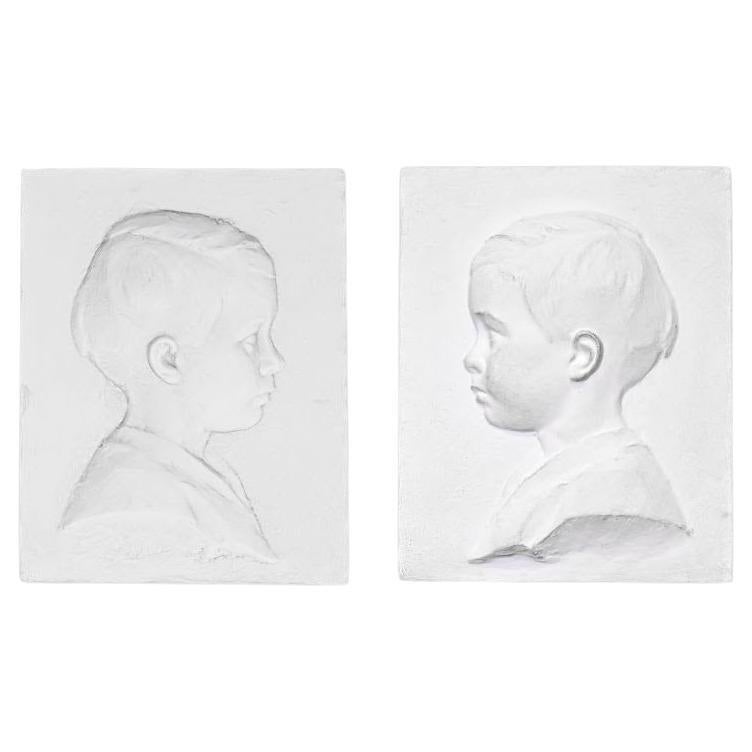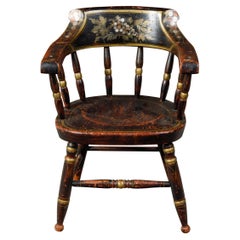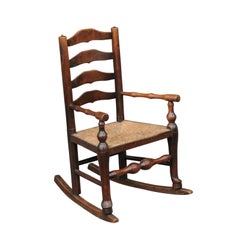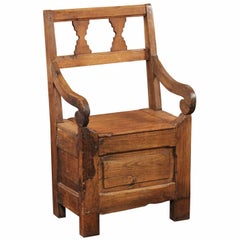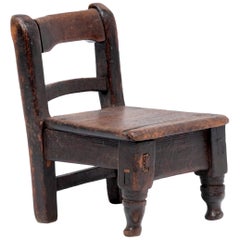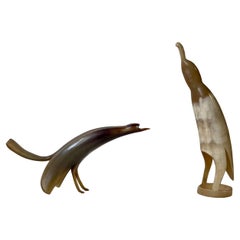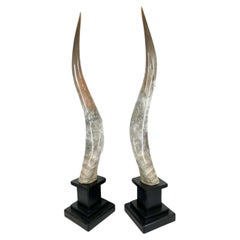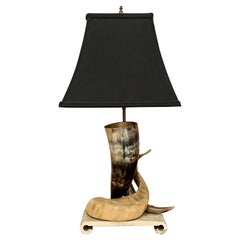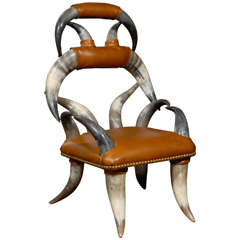
Child’s Steer Horn Chair with Leather Seat from the American West, circa 1910
View Similar Items
Want more images or videos?
Request additional images or videos from the seller
1 of 9
Child’s Steer Horn Chair with Leather Seat from the American West, circa 1910
$1,875List Price
About the Item
- Dimensions:Height: 29 in (73.66 cm)Width: 14.5 in (36.83 cm)Depth: 14 in (35.56 cm)Seat Height: 11.5 in (29.21 cm)
- Materials and Techniques:
- Place of Origin:
- Period:
- Date of Manufacture:circa 1910
- Condition:Wear consistent with age and use.
- Seller Location:Atlanta, GA
- Reference Number:Seller: F 40061stDibs: 1307228367971
About the Seller
5.0
Platinum Seller
Premium sellers with a 4.7+ rating and 24-hour response times
Established in 1988
1stDibs seller since 2007
1,422 sales on 1stDibs
Typical response time: 1 hour
Authenticity Guarantee
In the unlikely event there’s an issue with an item’s authenticity, contact us within 1 year for a full refund. DetailsMoney-Back Guarantee
If your item is not as described, is damaged in transit, or does not arrive, contact us within 7 days for a full refund. Details24-Hour Cancellation
You have a 24-hour grace period in which to reconsider your purchase, with no questions asked.Vetted Professional Sellers
Our world-class sellers must adhere to strict standards for service and quality, maintaining the integrity of our listings.Price-Match Guarantee
If you find that a seller listed the same item for a lower price elsewhere, we’ll match it.Trusted Global Delivery
Our best-in-class carrier network provides specialized shipping options worldwide, including custom delivery.More From This Seller
View AllAmerican Rustic Pine Child's High Chair with Rush Seat, Early 20th Century
Located in Atlanta, GA
An American rustic pine child's high chair from the early 20th century with rush seat. Experience the warmth and nostalgia of early American craftsmanship with this rustic pine child...
Category
Early 20th Century American Rustic Children's Furniture
Materials
Rush, Pine
American 19th Century Lambert Hitchcock's Child Chair with Black and Gold Tones
By Lambert Hitchcock
Located in Atlanta, GA
An American Lambert Hitchcock's child's chair from the 19th century, with black and gold finish and grape motifs. Created by American furniture manufacturer Lambert Hitchcock during ...
Category
Antique 19th Century American Children's Furniture
Materials
Wood
English 1800s Georgian Period Plum Wood Child's Rocking Chair with Rush Seat
Located in Atlanta, GA
An English Georgian period plum wood child's rocking chair from the early 19th century, with rush seat, ladder back and turned base. Born in the very early y...
Category
Antique Early 19th Century English Georgian Children's Furniture
Materials
Rush, Wood
English Country Pine Chair circa 1800 with Scrolled Arms and Lift-Top Seat
Located in Atlanta, GA
An English country pine chair from the early 19th century, with pierced back, scrolled arms and lift-top seat. This rustic country armchair features a simple pierced back, adorned wi...
Category
Antique Early 19th Century English Rustic Armchairs
Materials
Pine
English 1900s Walnut Chair with Carved Dog Heads, Leather Seat and Turned Base
Located in Atlanta, GA
An English walnut chair from the turn of the century, with carved dog heads, leather seat and turned base. Created in England in the early years of the...
Category
Early 20th Century English Chairs
Materials
Leather, Walnut
English 1900s Wooden Child's Chair with Serpentine Arms and Custom Upholstery
Located in Atlanta, GA
An English wooden child's chair from circa 1900 with serpentine arms, stretchers and custom linen upholstery. This English wooden child's chair, dating back to around 1900, is a deli...
Category
Early 20th Century English Children's Furniture
Materials
Upholstery, Wood
You May Also Like
Guatemalan Child's Chair, circa 1900
Located in Chicago, IL
Crafted in the early 20th century, this petite Guatemalan children's chair charms with its playful asymmetry and richly textured surface. Influenced by Spanish Colonial furniture design, the chair has a slatted back and square seat resting on two short, hand-turned legs. The low seat is the perfect height for a youngster, but we love this petite chair as a low side table or tabletop display Stand...
Category
Early 20th Century Guatemalan Rustic Figurative Sculptures
Materials
Wood
Sculptural Mid-Century stylized birds carved from Steer Horn, 1960s
Located in Esbjerg, DK
Small scaled hand-made bird figurines carved in steer horn. One of them featuring small green glass eye and the other being a slightly more abstract or freely interpreted bird. Never...
Category
Mid-20th Century European Mid-Century Modern Animal Sculptures
Materials
Horn
Custom Mounted Pair of Matching Long Horn Steer Horns
Located in Nantucket, MA
Matched pair of long horn steer horns of good color and form on custom made wood bases.
Category
21st Century and Contemporary American Mounted Objects
Materials
Horn, Pine
Decorative Steer Horn Table Lamp with Faux Marble Base
Located in Denton, TX
Decorative steer horn table lamp with faux marble base.
Category
20th Century American Mid-Century Modern Table Lamps
Materials
Brass
Charming Bust of a Child’s Head by Edwin Whitney-Smith, Dated, 1910
Located in Lymington, Hampshire
A charming bust of a child’s head by Edwin Whitney-Smith, dated 1910, the girl has her head slightly tilted forwards as she looks out from under a lock of hair, set on a square block signed on the reverse ‘E Whitney-Smith 1910’.
This bronze is a reduction of Whitney-Smith’s original marble piece, a photograph of which survives in the V&A (object number AAD/1990/12/63). Another version can be seen in a 1920s photograph of the artist in his studio owned by the National Portrait Gallery (NPG x194201). Neither the identity of the sitter nor title of the work is known.
Edwin Whitney-Smith (1880-1952) was one of the pre-eminent sculptors of his day. Born in Bristol in 1880, he became a student of William Harbutt, the headmaster of Bath School of Art, best remembered today for inventing plasticine. Whitney-Smith showed great promise from an early age, opening a studio in St John’s Wood, London, in 1910. He exhibited over 40 pieces at the Royal Academy and despite not achieving Academician status, even with list of illustrious proposers, he became a dear friend of Sir Alfred Munnings, the famous horse painter, and sculpted his portrait. He was, however, elected to the Royal Society of British Sculptors and his works were generally well-received by critics and the general public alike.
Aside from the RA, he exhibited in Bristol, at the Paris Salon and the Scottish Academy and his work attracted the attention of such important patrons as the Courtauld family. One of his most famous works, The Waking Child, is in the Ferens Art Gallery in Hull and another, The Irishman, is in the Tate. One version of his bust of Ernest Bevin, the trade unionist, stands in Tooley Street in Bermondsey to this day. An article in The Sphere, published on the 3rd of May 1924, referred to the sculptor as “a well-known sculptor of smiling children” and mentioned his “famous babies’ heads”.
Category
Vintage 1910s English Busts
Materials
Bronze
Seated Virgin with Child (Sedes Sapientiae) from the 12th Century in Spain
Located in Madrid, ES
Technique: Tempera and oil on wood
Dimensions: 25 x 11 x 8 cm
Description:
This exceptional work from the 12th century represents the Seated Virgin with Child (Sedes Sapientiae), standing out as an artistic treasure from medieval Spain. The portrayal of the Virgin enthroned with the Child on her lap is emblematic of Romanesque art, and this particular piece is a valuable and authentic example of that era.
The current polychromy belongs to the Gothic period and overlays the original Romanesque layer. It is crucial to highlight that the current state of the artwork is the original, without any cleaning interventions, imparting a unique authenticity.
The work exhibits architectural characteristics typical of Romanesque art, evident in the sides of the throne. The rigidity and symmetry characteristic of this style are reflected in the firm presentation of the Baby Jesus, noticeable in his gesture while holding his son. The Virgin wears a crown, symbolizing her royal character as the Queen of Heaven and Creation. Both figures retain traces of polychromy on the face and attire, adding layers of history and authenticity.
While similar Romanesque Virgin...
Category
Antique 15th Century and Earlier Figurative Sculptures
Materials
Fruitwood
$7,214 Sale Price
20% Off
Recently Viewed
View AllMore Ways To Browse
Horn Couch
Horner Sofa
Steer Horn
Longhorn Furniture
Antique Conversation Couch
Western Leather Sofa
Tobey Furniture
Brass Longhorn
Ilmari Tapiovaara Mademoiselle Chair
Iris Chair Merve Kahraman
Italian Palisander Chairs
Japanese Natural Fiber Chairs
Jasper Seating Company
Jellyfish Chair
Juliette Chair
Kagan Unicorn
Kartell 4875
Landi Edoardo
